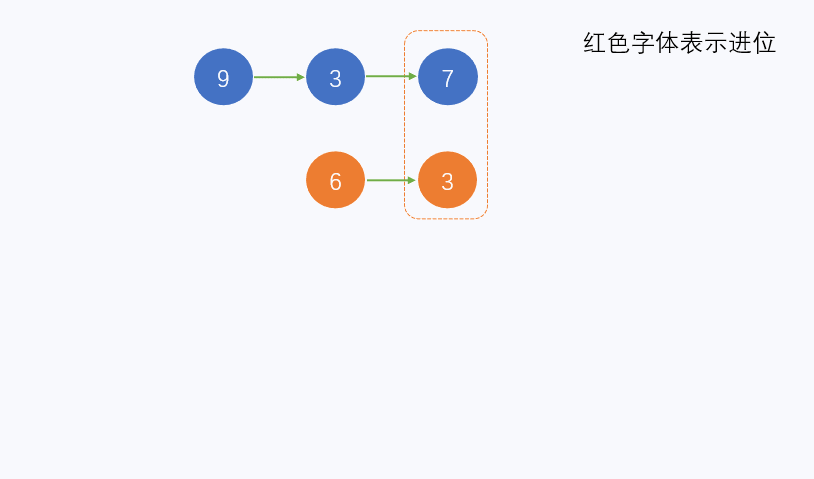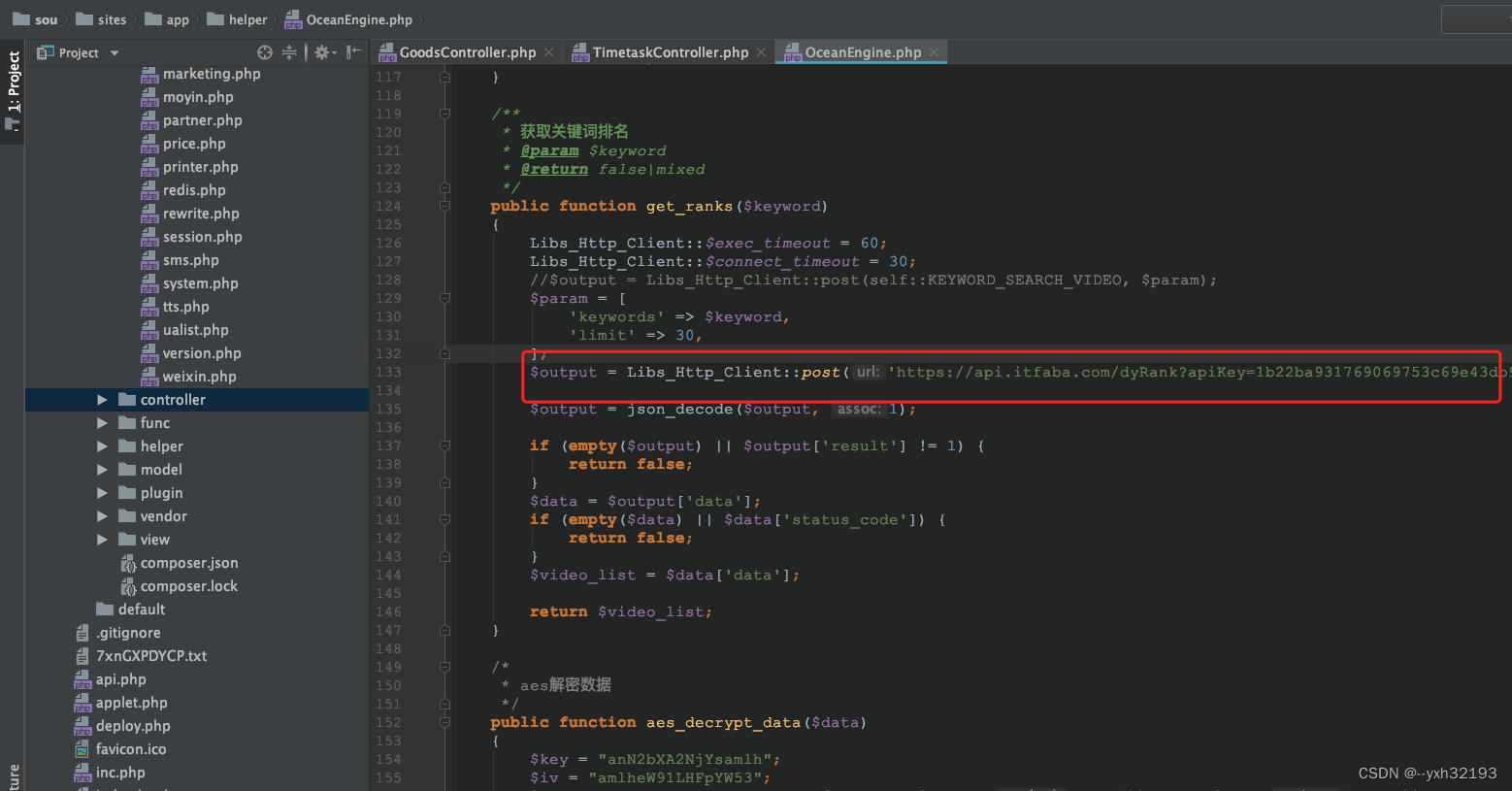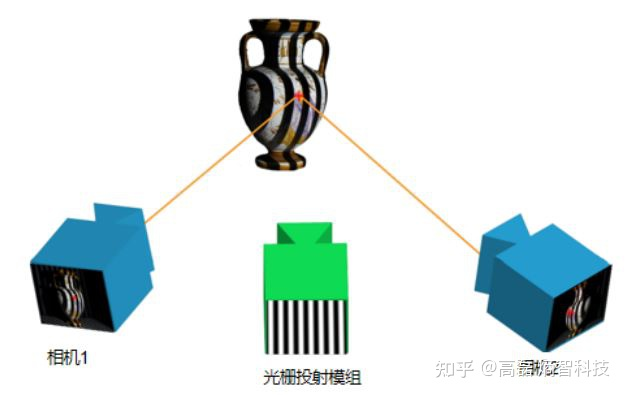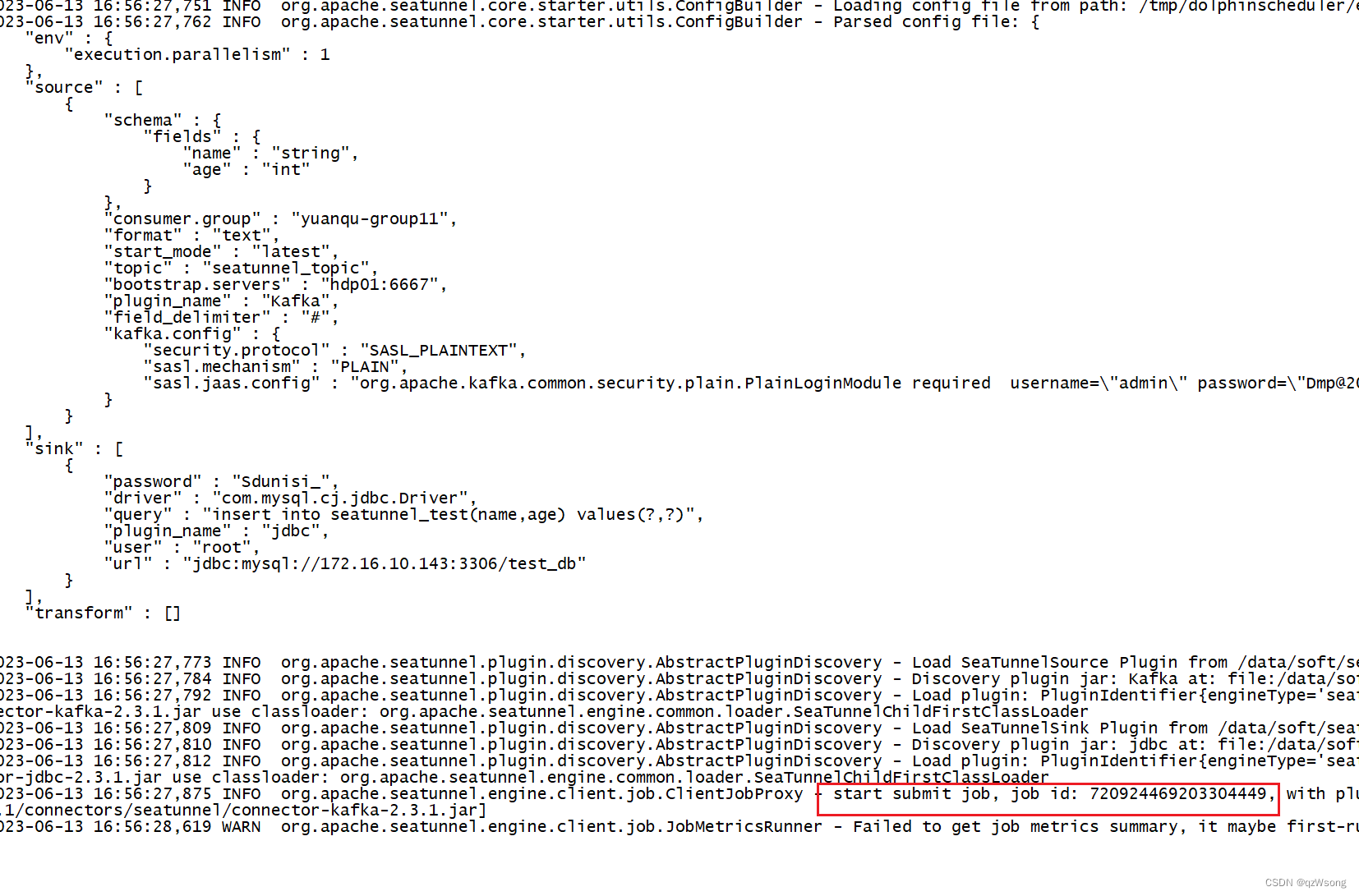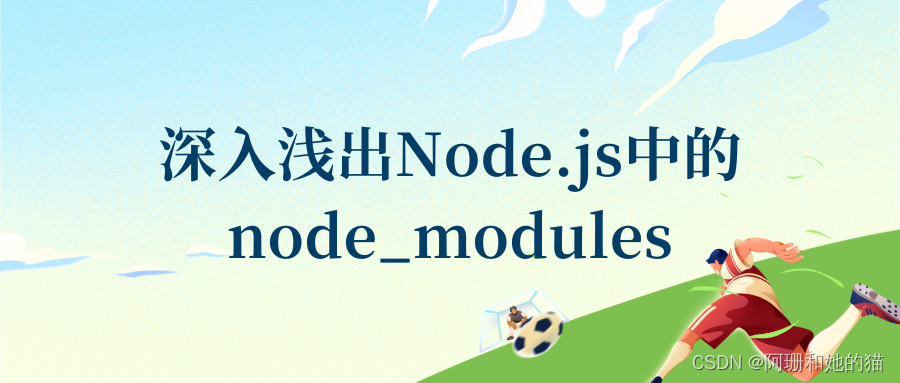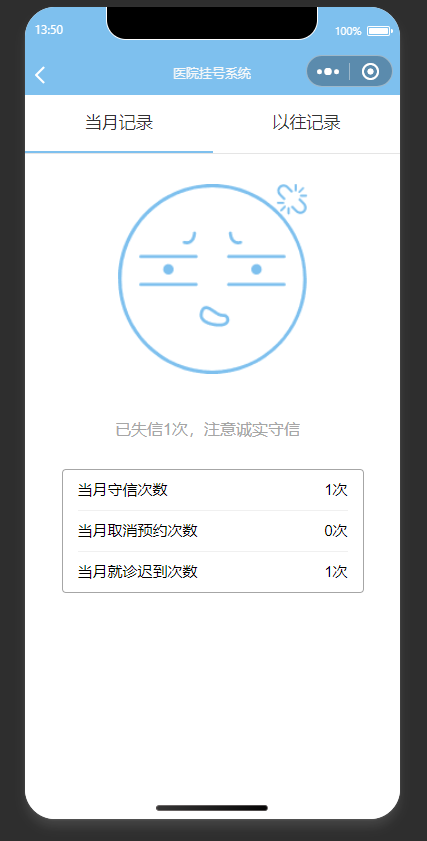
本文主要介绍 JNI 的数据传递上,即 Java 如何传递对象给 C++; 而 C++ 又如何将数据封装成 Java 所需的对象。
1. 基本数据类型
传递 java 的基本类型是非常简单而直接的,一个 jxxx 之类的类型已经定义在本地系统中了,比如:jint, jbyte, jshort, jlong, jfloat, jdouble, jchar 和 jboolean分别对应java的int, byte, short, long, float, double, char 和 boolean基本类型。
Java JNI 程序:TestJNIPrimitive.java
public class TestJNIPrimitive {
static {
System.loadLibrary("myjni"); // myjni.dll (Windows) or libmyjni.so (Unixes)
}
// Declare a native method average() that receives two ints and return a double containing the average
private native double average(int n1, int n2);
// Test Driver
public static void main(String args[]) {
System.out.println("In Java, the average is " + new TestJNIPrimitive().average(3, 2));
}
}
这个 JNI 程序加载了 myjni.dll(windows)库或者 libmyjni.so(类UNIX)库。并且声明了一个 native 方法,这个方法接受两个int类型的参数,并且返回一个 double 类型的返回值,这个值是两个int型数的平均值。mian方法调用了 average 函数。
下面,我们将上面的 java 代码编译成TestJNIPrimitive.class,进而生成
C/C++ 头文件 TestJNIPrimitive.h:
> javac TestJNIPrimitive.java
> javah TestJNIPrimitive // Output is TestJNIPrimitive.h
C实现:TestJNIPrimitive.c
头文件 TestJNIPrimitive.h 中包含了一个函数声明:
JNIEXPORT jdouble JNICALL Java_TestJNIPrimitive_average(JNIEnv *, jobject, jint, jint);
可以看到,这里的 jint 和 jdouble 分别表示 java 中的 int 和 double 。
jni.h(windows 上是 win32/jni_mh.h)头文件包含了这些数据类型的定义,同时多了一个jsize的定义:
// In "win\jni_mh.h" - machine header which is machine dependent
typedef long jint;
typedef __int64 jlong;
typedef signed char jbyte;
// In "jni.h"
typedef unsigned char jboolean;
typedef unsigned short jchar;
typedef short jshort;
typedef float jfloat;
typedef double jdouble;
typedef jint jsize;
有趣的是,jint 对应到 C 的 long 类型(至少是 32bit 的),而不是 C 的 int 类型(至少是16bit的)。于是,在 C 代码中要使用jint而不是int是很重要的。同时,CygWin 不支持__int64类型。
TestJNIPrimitive.c 的实现如下:
#include <jni.h>
#include <stdio.h>
#include "TestJNIPrimitive.h"
JNIEXPORT jdouble JNICALL Java_TestJNIPrimitive_average
(JNIEnv *env, jobject thisObj, jint n1, jint n2) {
jdouble result;
printf("In C, the numbers are %d and %d\n", n1, n2);
result = ((jdouble)n1 + n2) / 2.0;
// jint is mapped to int, jdouble is mapped to double
return result;
}
然后,我们编译代码成一个共享库:
// MinGW GCC under Windows
> set JAVA_HOME={jdk-installed-directory}
> gcc -Wl,--add-stdcall-alias -I"%JAVA_HOME%\include" -I"%JAVA_HOME%\include\win32" -shared -o myjni.dll TestJNIPrimitive.c
最后,我们运行这个 java 代码:
java TestJNIPrimitive
C++ 实现 TestJNIPrimitive.cpp 代码如下:
#include <jni.h>
#include <iostream>
#include "TestJNIPrimitive.h"
using namespace std;
JNIEXPORT jdouble JNICALL Java_TestJNIPrimitive_average
(JNIEnv *env, jobject obj, jint n1, jint n2) {
jdouble result;
cout << "In C++, the numbers are " << n1 << " and " << n2 << endl;
result = ((jdouble)n1 + n2) / 2.0;
// jint is mapped to int, jdouble is mapped to double
return result;
}
使用 g++ 来编译上面的代码:
// MinGW GCC under Windows
> g++ -Wl,--add-stdcall-alias -I"%JAVA_HOME%\include" -I"%JAVA_HOME%\include\win32" -shared -o myjni.dll TestJNIPrimitive.cpp
2. 传递字符串
Java JNI 程序:TestJNIString.java
public class TestJNIString {
static {
System.loadLibrary("myjni"); // myjni.dll (Windows) or libmyjni.so (Unixes)
}
// Native method that receives a Java String and return a Java String
private native String sayHello(String msg);
public static void main(String args[]) {
String result = new TestJNIString().sayHello("Hello from Java");
System.out.println("In Java, the returned string is: " + result);
}
}
上面的代码声明了一个 native 函数 sayHello,这个函数接受一个 java 的 String,然后返回一个 Java string,main 方法调用了 sayHello 函数。
然后,我们编译上面的代码,并且生成 C/C++ 的头文件:
> javac TestJNIString.java
> javah TestJNIString
C代码实现:TestJNIString.c
上面的头文件 TestJNIString.h声明了这样的一个函数:
JNIEXPORT jstring JNICALL Java_TestJNIString_sayHello(JNIEnv *, jobject, jstring);
JNI 定义了 jstring 类型应对 java 的 String 类型。上面声明中的最后一个参数 jstring 就是来自 Java 代码中的 String 参数,同时,返回值也是一个 jstring 类型。
传递一个字符串比传递基本类型要复杂的多,因为java的String是一个对象,而C的string是一个NULL结尾的char数组。因此,我们需要将Java的String对象转换成C的字符串表示形式:char *。
前面我们提到,JNI环境指针JNIEnv *已经为我们定义了非常丰富的接口函数用来处理数据的转换:
- 调用
const char* GetStringUTFChars(JNIEnv*, jstring, jboolean*)来将JNI的jstring转换成C的char * - 调用
jstring NewStringUTF(JNIEnv*, char*)来将C的char *转换成JNI的jstring
因此我们的C程序基本过程如下:
- 使用
GetStringUTFChars()函数来将jstring转换成char * - 然后进行需要的数据处理
- 使用
NewStringUTF()函数来将char *转换成jstring,并且返回
#include <jni.h>
#include <stdio.h>
#include "TestJNIString.h"
JNIEXPORT jstring JNICALL Java_TestJNIString_sayHello(JNIEnv *env, jobject thisObj, jstring inJNIStr) {
// Step 1: Convert the JNI String (jstring) into C-String (char*)
const char *inCStr = (*env)->GetStringUTFChars(env, inJNIStr, NULL);
if (NULL == inCSt) return NULL;
// Step 2: Perform its intended operations
printf("In C, the received string is: %s\n", inCStr);
(*env)->ReleaseStringUTFChars(env, inJNIStr, inCStr); // release resources
// Prompt user for a C-string
char outCStr[128];
printf("Enter a String: ");
scanf("%s", outCStr); // not more than 127 characters
// Step 3: Convert the C-string (char*) into JNI String (jstring) and return
return (*env)->NewStringUTF(env, outCStr);
}
将上面的代码编译成共享库:
// MinGW GCC under Windows
> gcc -Wl,--add-stdcall-alias -I"<JAVA_HOME>\include" -I"<JAVA_HOME>\include\win32" -shared -o myjni.dll TestJNIString.c
最后,运行代码:
> java TestJNIString
In C, the received string is: Hello from Java
Enter a String: test
In Java, the returned string is: test
JNI 中的 string 转换函数
上面我们展示了两个函数,现在我们全面梳理下JNI为我们提供的函数。JNI支持Unicode(16bit字符)和UTF-8(使用1~3字节的编码)转化。一般而言,我们应该在C/C++中使用UTF-8的编码方式。
JNI系统提供了如下关于字符串处理的函数(一共两组,UTF8和Unicode):
// UTF-8 String (encoded to 1-3 byte, backward compatible with 7-bit ASCII)
// Can be mapped to null-terminated char-array C-string
const char * GetStringUTFChars(JNIEnv *env, jstring string, jboolean *isCopy);
// Returns a pointer to an array of bytes representing the string in modified UTF-8 encoding.
void ReleaseStringUTFChars(JNIEnv *env, jstring string, const char *utf);
// Informs the VM that the native code no longer needs access to utf.
jstring NewStringUTF(JNIEnv *env, const char *bytes);
// Constructs a new java.lang.String object from an array of characters in modified UTF-8 encoding.
jsize GetStringUTFLength(JNIEnv *env, jstring string);
// Returns the length in bytes of the modified UTF-8 representation of a string.
void GetStringUTFRegion(JNIEnv *env, jstring str, jsize start, jsize length, char *buf);
// Translates len number of Unicode characters beginning at offset start into modified UTF-8 encoding
// and place the result in the given buffer buf.
// Unicode Strings (16-bit character)
const jchar * GetStringChars(JNIEnv *env, jstring string, jboolean *isCopy);
// Returns a pointer to the array of Unicode characters
void ReleaseStringChars(JNIEnv *env, jstring string, const jchar *chars);
// Informs the VM that the native code no longer needs access to chars.
jstring NewString(JNIEnv *env, const jchar *unicodeChars, jsize length);
// Constructs a new java.lang.String object from an array of Unicode characters.
jsize GetStringLength(JNIEnv *env, jstring string);
// Returns the length (the count of Unicode characters) of a Java string.
void GetStringRegion(JNIEnv *env, jstring str, jsize start, jsize length, jchar *buf);
// Copies len number of Unicode characters beginning at offset start to the given buffer buf
GetStringUTFChars() 函数可以将 jstring 转成 char *,这个函数会返回NULL,如果系统的内容分配失败的话。因此,好的做法是检查这个函数的返回是不是NULL。第三个参数是isCopy,这个参数是一个in-out参数,传进去的是一个指针,函数结束的时候指针的内容会被修改。如果内容是JNI_TRUE的话,那么代表返回的数据是jstring数据的一个拷贝,反之,如果是JNI_FALSE的话,就说明返回的字符串就是直接指向那个String对象实例的。在这种情况下,本地代码不应该随意修改string中的内容,因为修改会代码Java中的修改。JNI系统会尽量保证返回的是直接引用,如果不能的话,那就返回一个拷贝。通常,我们很少关心修改这些string ,因此我们这里一般传递NULL给isCopy参数。
必须要注意的是,当你不在需要 GetStringUTFChars 返回的字符串的时候,一定记得调用ReleaseStringUTFChars()函数来将内存资源释放!否则会内存泄露!并且上层java中的GC也不能进行!
另外,在GetStringUTFChars和ReleaseStringUTFChars不能block!
NewStringUTF()函数可以从char *字符串得到jstring。
C++实现:TestJNIString.cpp
#include <jni.h>
#include <iostream>
#include <string>
#include "TestJNIString.h"
using namespace std;
JNIEXPORT jstring JNICALL Java_TestJNIString_sayHello(JNIEnv *env, jobject thisObj, jstring inJNIStr) {
// Step 1: Convert the JNI String (jstring) into C-String (char*)
const char *inCStr = env->GetStringUTFChars(inJNIStr, NULL);
if (NULL == inCStr) return NULL;
// Step 2: Perform its intended operations
cout << "In C++, the received string is: " << inCStr << endl;
env->ReleaseStringUTFChars(inJNIStr, inCStr); // release resources
// Prompt user for a C++ string
string outCppStr;
cout << "Enter a String: ";
cin >> outCppStr;
// Step 3: Convert the C++ string to C-string, then to JNI String (jstring) and return
return env->NewStringUTF(outCppStr.c_str());
}
使用g++编译上面的代码:
// MinGW GCC under Windows
> g++ -Wl,--add-stdcall-alias -I"<JAVA_HOME>\include" -I"<JAVA_HOME>\include\win32" -shared -o myjni.dll TestJNIString.cpp
需要注意的是,在C++中,本地string类的函数调用语法不一样。在C++中,我们使用env->来调用,而不是(env*)->。同时,在C++函数中不需要JNIEnv*这个参数了。
3. 传递基本类型的数组
JNI 代码:TestJNIPrimitiveArray.java
public class TestJNIPrimitiveArray {
static {
System.loadLibrary("myjni"); // myjni.dll (Windows) or libmyjni.so (Unixes)
}
// Declare a native method sumAndAverage() that receives an int[] and
// return a double[2] array with [0] as sum and [1] as average
private native double[] sumAndAverage(int[] numbers);
// Test Driver
public static void main(String args[]) {
int[] numbers = {22, 33, 33};
double[] results = new TestJNIPrimitiveArray().sumAndAverage(numbers);
System.out.println("In Java, the sum is " + results[0]);
System.out.println("In Java, the average is " + results[1]);
}
}
C语言实现:TestJNIPrimitiveArray.c
头文件 TestJNIPrimitiveArray.h 包含以下函数声明:
JNIEXPORT jdoubleArray JNICALL Java_TestJNIPrimitiveArray_average (JNIEnv *, jobject, jintArray);
在Java中,array是指一种类型,类似于类。一共有9种java的array,8个基本类型的array和一个object的array。JNI针对java的基本类型都定义了相应的array:jintArray, jbyteArray, jshortArray, jlongArray, jfloatArray, jdoubleArray, jcharArray, jbooleanArray,并且也有面向object的jobjectArray。
同样地,你需要在JNI array和Native array之间进行转换,JNI系统已经为我们提供了一系列的接口函数:
- 使用
jint* GetIntArrayElements(JNIEnv *env, jintArray a, jboolean *iscopy)将jintarray转换成C的jint[] - 使用
jintArray NewIntArray(JNIEnv *env, jsize len)函数来分配一个len字节大小的空间,然后再使用void SetIntArrayRegion(JNIEnv *env, jintArray a, jsize start, jsize len, const jint *buf)函数将jint[]中的数据拷贝到jintArray中去。
一共有8对类似上面的函数,分别对应java的8个基本数据类型。
因此,native程序需要:
- 接受来自java的JNI array,然后转换成本地array
- 进行需要的数据操作
- 将需要返回的数据转换成
jni的array,然后返回
下面是C代码实现的TestJNIPrimitiveArray.c:
#include <jni.h>
#include <stdio.h>
#include "TestJNIPrimitiveArray.h"
JNIEXPORT jdoubleArray JNICALL Java_TestJNIPrimitiveArray_sumAndAverage
(JNIEnv *env, jobject thisObj, jintArray inJNIArray) {
// Step 1: Convert the incoming JNI jintarray to C's jint[]
jint *inCArray = (*env)->GetIntArrayElements(env, inJNIArray, NULL);
if (NULL == inCArray) return NULL;
jsize length = (*env)->GetArrayLength(env, inJNIArray);
// Step 2: Perform its intended operations
jint sum = 0;
int i;
for (i = 0; i < length; i++) {
sum += inCArray[i];
}
jdouble average = (jdouble)sum / length;
(*env)->ReleaseIntArrayElements(env, inJNIArray, inCArray, 0); // release resources
jdouble outCArray[] = {sum, average};
// Step 3: Convert the C's Native jdouble[] to JNI jdoublearray, and return
jdoubleArray outJNIArray = (*env)->NewDoubleArray(env, 2); // allocate
if (NULL == outJNIArray) return NULL;
(*env)->SetDoubleArrayRegion(env, outJNIArray, 0 , 2, outCArray); // copy
return outJNIArray;
}
JNI基本类型的array函数
JNI基本类型的array(jintArray, jbyteArray, jshortArray, jlongArray, jfloatArray, jdoubleArray, jcharArray 和 jbooleanArray)函数如下:
// ArrayType: jintArray, jbyteArray, jshortArray, jlongArray, jfloatArray, jdoubleArray, jcharArray, jbooleanArray
// PrimitiveType: int, byte, short, long, float, double, char, boolean
// NativeType: jint, jbyte, jshort, jlong, jfloat, jdouble, jchar, jboolean
NativeType * Get<PrimitiveType>ArrayElements(JNIEnv *env, ArrayType array, jboolean *isCopy);
void Release<PrimitiveType>ArrayElements(JNIEnv *env, ArrayType array, NativeType *elems, jint mode);
void Get<PrimitiveType>ArrayRegion(JNIEnv *env, ArrayType array, jsize start, jsize length, NativeType *buffer);
void Set<PrimitiveType>ArrayRegion(JNIEnv *env, ArrayType array, jsize start, jsize length, const NativeType *buffer);
ArrayType New<PrimitiveType>Array(JNIEnv *env, jsize length);
void * GetPrimitiveArrayCritical(JNIEnv *env, jarray array, jboolean *isCopy);
void ReleasePrimitiveArrayCritical(JNIEnv *env, jarray array, void *carray, jint mode);
同样地,在 get 函数和 release 函数之间也不能always block。
4. 访问Java对象变量和回调Java方法
访问Java对象实例的变量
JNI程序:TestJNIInstanceVariable.java
public class TestJNIInstanceVariable {
static {
System.loadLibrary("myjni"); // myjni.dll (Windows) or libmyjni.so (Unixes)
}
// Instance variables
private int number = 88;
private String message = "Hello from Java";
// Declare a native method that modifies the instance variables
private native void modifyInstanceVariable();
// Test Driver
public static void main(String args[]) {
TestJNIInstanceVariable test = new TestJNIInstanceVariable();
test.modifyInstanceVariable();
System.out.println("In Java, int is " + test.number);
System.out.println("In Java, String is " + test.message);
}
}
这个类包含了两个private实例变量,一个 int,一个 String 对象。然后我们在 main 中调用本地函数modifyInstanceVariable来修改这两个变量。
C代码实现:TestJNIInstanceVariable.c
#include <jni.h>
#include <stdio.h>
#include "TestJNIInstanceVariable.h"
JNIEXPORT void JNICALL Java_TestJNIInstanceVariable_modifyInstanceVariable
(JNIEnv *env, jobject thisObj) {
// Get a reference to this object's class
jclass thisClass = (*env)->GetObjectClass(env, thisObj);
// int
// Get the Field ID of the instance variables "number"
jfieldID fidNumber = (*env)->GetFieldID(env, thisClass, "number", "I");
if (NULL == fidNumber) return;
// Get the int given the Field ID
jint number = (*env)->GetIntField(env, thisObj, fidNumber);
printf("In C, the int is %d\n", number);
// Change the variable
number = 99;
(*env)->SetIntField(env, thisObj, fidNumber, number);
// Get the Field ID of the instance variables "message"
jfieldID fidMessage = (*env)->GetFieldID(env, thisClass, "message", "Ljava/lang/String;");
if (NULL == fidMessage) return;
// String
// Get the object given the Field ID
jstring message = (*env)->GetObjectField(env, thisObj, fidMessage);
// Create a C-string with the JNI String
const char *cStr = (*env)->GetStringUTFChars(env, message, NULL);
if (NULL == cStr) return;
printf("In C, the string is %s\n", cStr);
(*env)->ReleaseStringUTFChars(env, message, cStr);
// Create a new C-string and assign to the JNI string
message = (*env)->NewStringUTF(env, "Hello from C");
if (NULL == message) return;
// modify the instance variables
(*env)->SetObjectField(env, thisObj, fidMessage, message);
}
为了访问对象中的变量,我们需要:
- 调用
GetObjectClass()获得目标对象的类引用 - 从上面获得的类引用中获得
Field ID来访问变量,你需要提供这个变量的名字,变量的描述符(也称为签名)。对于java类而言,描述符是这样的形式:“Lfully-qualified-name;”(注意最后有一个英文半角分号),其中的包名点号换成斜杠(/),比如java的Stirng类的描述符就是“Ljava/lang/String;”。对于基本类型而言,I代表int,B代表byte,S代表short,J代表long,F代表float,D代表double,C代表char,Z代表boolean。对于array而言,使用左中括号”[“来表示,比如“[Ljava/lang/Object;”表示Object的array,“[I”表示int型的array。 - 基于上面获得的
Field ID,使用GetObjectField()或者Get_primitive-type_Field()函数来从中解析出我们想要的数据 - 使用
SetObjectField()或者Set_primitive-type_Field()函数来修改变量
JNI中用来访问实例变量的函数有:
jclass GetObjectClass(JNIEnv *env, jobject obj);
// Returns the class of an object.
jfieldID GetFieldID(JNIEnv *env, jclass cls, const char *name, const char *sig);
// Returns the field ID for an instance variable of a class.
NativeType Get<type>Field(JNIEnv *env, jobject obj, jfieldID fieldID);
void Set<type>Field(JNIEnv *env, jobject obj, jfieldID fieldID, NativeType value);
// Get/Set the value of an instance variable of an object
// <type> includes each of the eight primitive types plus Object.
访问类中的static变量
访问类中的static变量类似于上面访问普通的实例变量,只是我们这里使用的函数是GetStaticFieldID(), Get|SetStaticObjectField(), Get|SetStatic_Primitive-type_Field()。
JNI 程序: TestJNIStaticVariable.java
public class TestJNIStaticVariable {
static {
System.loadLibrary("myjni"); // nyjni.dll (Windows) or libmyjni.so (Unixes)
}
// Static variables
private static double number = 55.66;
// Declare a native method that modifies the static variable
private native void modifyStaticVariable();
// Test Driver
public static void main(String args[]) {
TestJNIStaticVariable test = new TestJNIStaticVariable();
test.modifyStaticVariable();
System.out.println("In Java, the double is " + number);
}
}
C语言实现:C Implementation - TestJNIStaticVariable.c
#include <jni.h>
#include <stdio.h>
#include "TestJNIStaticVariable.h"
JNIEXPORT void JNICALL Java_TestJNIStaticVariable_modifyStaticVariable
(JNIEnv *env, jobject thisObj) {
// Get a reference to this object's class
jclass cls = (*env)->GetObjectClass(env, thisObj);
// Read the int static variable and modify its value
jfieldID fidNumber = (*env)->GetStaticFieldID(env, cls, "number", "D");
if (NULL == fidNumber) return;
jdouble number = (*env)->GetStaticDoubleField(env, cls, fidNumber);
printf("In C, the double is %f\n", number);
number = 77.88;
(*env)->SetStaticDoubleField(env, cls, fidNumber, number);
}
JNI中用来访问类中的static变量的函数如下:
jfieldID GetStaticFieldID(JNIEnv *env, jclass cls, const char *name, const char *sig);
// Returns the field ID for a static variable of a class.
NativeType GetStatic<type>Field(JNIEnv *env, jclass clazz, jfieldID fieldID);
void SetStatic<type>Field(JNIEnv *env, jclass clazz, jfieldID fieldID, NativeType value);
// Get/Set the value of a static variable of a class.
// <type> includes each of the eight primitive types plus Object.
回调实例的普通和static方法
你可以在native代码中回调java中的普通或者static的方法。下面是实例:
JNI程序:TestJNICallBackMethod.java
public class TestJNICallBackMethod {
static {
System.loadLibrary("myjni"); // myjni.dll (Windows) or libmyjni.so (Unixes)
}
// Declare a native method that calls back the Java methods below
private native void nativeMethod();
// To be called back by the native code
private void callback() {
System.out.println("In Java");
}
private void callback(String message) {
System.out.println("In Java with " + message);
}
private double callbackAverage(int n1, int n2) {
return ((double)n1 + n2) / 2.0;
}
// Static method to be called back
private static String callbackStatic() {
return "From static Java method";
}
// Test Driver
public static void main(String args[]) {
new TestJNICallBackMethod().nativeMethod();
}
}
这个类中声明了一个native函数nativeMethod(),并且在main方法中调用了这个函数。nativeMethod()这个函数会回调这个类中定义的各种方法。
C语言实现:TestJNICallBackMethod.c
#include <jni.h>
#include <stdio.h>
#include "TestJNICallBackMethod.h"
JNIEXPORT void JNICALL Java_TestJNICallBackMethod_nativeMethod
(JNIEnv *env, jobject thisObj) {
// Get a class reference for this object
jclass thisClass = (*env)->GetObjectClass(env, thisObj);
// Get the Method ID for method "callback", which takes no arg and return void
jmethodID midCallBack = (*env)->GetMethodID(env, thisClass, "callback", "()V");
if (NULL == midCallBack) return;
printf("In C, call back Java's callback()\n");
// Call back the method (which returns void), baed on the Method ID
(*env)->CallVoidMethod(env, thisObj, midCallBack);
jmethodID midCallBackStr = (*env)->GetMethodID(env, thisClass,
"callback", "(Ljava/lang/String;)V");
if (NULL == midCallBackStr) return;
printf("In C, call back Java's called(String)\n");
jstring message = (*env)->NewStringUTF(env, "Hello from C");
(*env)->CallVoidMethod(env, thisObj, midCallBackStr, message);
jmethodID midCallBackAverage = (*env)->GetMethodID(env, thisClass,
"callbackAverage", "(II)D");
if (NULL == midCallBackAverage) return;
jdouble average = (*env)->CallDoubleMethod(env, thisObj, midCallBackAverage, 2, 3);
printf("In C, the average is %f\n", average);
jmethodID midCallBackStatic = (*env)->GetStaticMethodID(env, thisClass,
"callbackStatic", "()Ljava/lang/String;");
if (NULL == midCallBackStatic) return;
jstring resultJNIStr = (*env)->CallStaticObjectMethod(env, thisClass, midCallBackStatic);
const char *resultCStr = (*env)->GetStringUTFChars(env, resultJNIStr, NULL);
if (NULL == resultCStr) return;
printf("In C, the returned string is %s\n", resultCStr);
(*env)->ReleaseStringUTFChars(env, resultJNIStr, resultCStr);
}
为了能够回调实例中的方法,我们需要:
- 通过
GetObjectClass()函数获得这个实例的类对象 - 从上面获得类对象中,调用
GetMethodID()函数来获得Method ID,Method ID表示了实例中的某个方法的抽象。你需要提供这个方法的名字和签名信息,签名规则和变量类似。签名的格式是这样的:(parameters)return-type。如果我们实在觉得jni的签名不好记忆的话,我们可以是用JDK为我们提供的工具javap来获得某个class类中的所有方法的签名,使用-s选项表示打印签名,-p表示显示private成员:
> javap --help
> javap -s -p TestJNICallBackMethod
.......
private void callback();
Signature: ()V
private void callback(java.lang.String);
Signature: (Ljava/lang/String;)V
private double callbackAverage(int, int);
Signature: (II)D
private static java.lang.String callbackStatic();
Signature: ()Ljava/lang/String;
.......
从上面的输出我们可以清楚地看到类中每一个方法的签名。
- 基于上面我们获得的Method ID,我们可以调用
_Primitive-type_Method()或者CallVoidMethod()或者CallObjectMethod()来调用这个方法。如果某个方法需要参数的话,就在后面跟上参数即可。 - 如果想要调用一个static方法的话,使用
GetMethodID(), CallStatic_Primitive-type_Method(), CallStaticVoidMethod()或者CallStaticObjectMethod()。
JNI中用来回调实例和static方法的所有函数(两类,普通的和static的):
jmethodID GetMethodID(JNIEnv *env, jclass cls, const char *name, const char *sig);
// Returns the method ID for an instance method of a class or interface.
NativeType Call<type>Method(JNIEnv *env, jobject obj, jmethodID methodID, ...);
NativeType Call<type>MethodA(JNIEnv *env, jobject obj, jmethodID methodID, const jvalue *args);
NativeType Call<type>MethodV(JNIEnv *env, jobject obj, jmethodID methodID, va_list args);
// Invoke an instance method of the object.
// The <type> includes each of the eight primitive and Object.
jmethodID GetStaticMethodID(JNIEnv *env, jclass cls, const char *name, const char *sig);
// Returns the method ID for an instance method of a class or interface.
NativeType CallStatic<type>Method(JNIEnv *env, jclass clazz, jmethodID methodID, ...);
NativeType CallStatic<type>MethodA(JNIEnv *env, jclass clazz, jmethodID methodID, const jvalue *args);
NativeType CallStatic<type>MethodV(JNIEnv *env, jclass clazz, jmethodID methodID, va_list args);
// Invoke an instance method of the object.
// The <type> includes each of the eight primitive and Object.
回调复写的父类实例方法
JNI提供了一系列的形如 CallNonvirtual_Type_Method()之类的函数来调用父类实例的方法:
- 首先获得Method ID,使用
GetMethodID() - 基于上获得的Method ID,通过调用
CallNonvirtual_Type_Method()函数来调用相应的方法,并且在参数中给出object,父类和参数列表。
JNI中用来访问父类方法的函数:
NativeType CallNonvirtual<type>Method(JNIEnv *env, jobject obj, jclass cls, jmethodID methodID, ...);
NativeType CallNonvirtual<type>MethodA(JNIEnv *env, jobject obj, jclass cls, jmethodID methodID, const jvalue *args);
NativeType CallNonvirtual<type>MethodV(JNIEnv *env, jobject obj, jclass cls, jmethodID methodID, va_list args);
创建 Object 和 Object arrays
你可以在native代码中构造jobject和jobjectarray,通过调用NewObject() 和 newObjectArray()函数,然后讲它们返回给java代码。
回调Java构造器来创建一个新的java对象
回调一个构造器和回调其他的方法是类似的,首先通过init作为方法名,V作为返回值来获得Method ID,然后通过NewObject()函数来构建一个java类对象。
JNI程序:TestJavaConstructor.java
public class TestJNIConstructor {
static {
System.loadLibrary("myjni"); // myjni.dll (Windows) or libmyjni.so (Unixes)
}
// Native method that calls back the constructor and return the constructed object.
// Return an Integer object with the given int.
private native Integer getIntegerObject(int number);
public static void main(String args[]) {
TestJNIConstructor obj = new TestJNIConstructor();
System.out.println("In Java, the number is :" + obj.getIntegerObject(9999));
}
}
这个类声明了一个getIntegerObject的native方法,这个方法接受一个int的数据,然后在native代码中创建一个Integer类型的对象,其中的值就是这个值。
C代码实现:TestJavaConstructor.c
#include <jni.h>
#include <stdio.h>
#include "TestJNIConstructor.h"
JNIEXPORT jobject JNICALL Java_TestJNIConstructor_getIntegerObject
(JNIEnv *env, jobject thisObj, jint number) {
// Get a class reference for java.lang.Integer
jclass cls = (*env)->FindClass(env, "java/lang/Integer");
// Get the Method ID of the constructor which takes an int
jmethodID midInit = (*env)->GetMethodID(env, cls, "<init>", "(I)V");
if (NULL == midInit) return NULL;
// Call back constructor to allocate a new instance, with an int argument
jobject newObj = (*env)->NewObject(env, cls, midInit, number);
// Try runnning the toString() on this newly create object
jmethodID midToString = (*env)->GetMethodID(env, cls, "toString", "()Ljava/lang/String;");
if (NULL == midToString) return NULL;
jstring resultStr = (*env)->CallObjectMethod(env, newObj, midToString);
const char *resultCStr = (*env)->GetStringUTFChars(env, resultStr, NULL);
printf("In C: the number is %s\n", resultCStr);
return newObj;
}
JNI中用于创建对象(jobject)的函数有:
jclass FindClass(JNIEnv *env, const char *name);
jobject NewObject(JNIEnv *env, jclass cls, jmethodID methodID, ...);
jobject NewObjectA(JNIEnv *env, jclass cls, jmethodID methodID, const jvalue *args);
jobject NewObjectV(JNIEnv *env, jclass cls, jmethodID methodID, va_list args);
// Constructs a new Java object. The method ID indicates which constructor method to invoke
jobject AllocObject(JNIEnv *env, jclass cls);
// Allocates a new Java object without invoking any of the constructors for the object.
对象(object)的array
JNI程序:TestJNIObjectArray.java
import java.util.ArrayList;
public class TestJNIObjectArray {
static {
System.loadLibrary("myjni"); // myjni.dll (Windows) or libmyjni.so (Unixes)
}
// Native method that receives an Integer[] and
// returns a Double[2] with [0] as sum and [1] as average
private native Double[] sumAndAverage(Integer[] numbers);
public static void main(String args[]) {
Integer[] numbers = {11, 22, 32}; // auto-box
Double[] results = new TestJNIObjectArray().sumAndAverage(numbers);
System.out.println("In Java, the sum is " + results[0]); // auto-unbox
System.out.println("In Java, the average is " + results[1]);
}
}
为了简单起见,这个类声明了一个native方法,这个方法接受一个Integer类型的array,然后在本地代码中计算这个array中的数的和与平均数,然后讲这两个数以Double array的形式返回。
C代码实现:TestJNIObjectArray.c
#include <jni.h>
#include <stdio.h>
#include "TestJNIObjectArray.h"
JNIEXPORT jobjectArray JNICALL Java_TestJNIObjectArray_sumAndAverage
(JNIEnv *env, jobject thisObj, jobjectArray inJNIArray) {
// Get a class reference for java.lang.Integer
jclass classInteger = (*env)->FindClass(env, "java/lang/Integer");
// Use Integer.intValue() to retrieve the int
jmethodID midIntValue = (*env)->GetMethodID(env, classInteger, "intValue", "()I");
if (NULL == midIntValue) return NULL;
// Get the value of each Integer object in the array
jsize length = (*env)->GetArrayLength(env, inJNIArray);
jint sum = 0;
int i;
for (i = 0; i < length; i++) {
jobject objInteger = (*env)->GetObjectArrayElement(env, inJNIArray, i);
if (NULL == objInteger) return NULL;
jint value = (*env)->CallIntMethod(env, objInteger, midIntValue);
sum += value;
}
double average = (double)sum / length;
printf("In C, the sum is %d\n", sum);
printf("In C, the average is %f\n", average);
// Get a class reference for java.lang.Double
jclass classDouble = (*env)->FindClass(env, "java/lang/Double");
// Allocate a jobjectArray of 2 java.lang.Double
jobjectArray outJNIArray = (*env)->NewObjectArray(env, 2, classDouble, NULL);
// Construct 2 Double objects by calling the constructor
jmethodID midDoubleInit = (*env)->GetMethodID(env, classDouble, "<init>", "(D)V");
if (NULL == midDoubleInit) return NULL;
jobject objSum = (*env)->NewObject(env, classDouble, midDoubleInit, (double)sum);
jobject objAve = (*env)->NewObject(env, classDouble, midDoubleInit, average);
// Set to the jobjectArray
(*env)->SetObjectArrayElement(env, outJNIArray, 0, objSum);
(*env)->SetObjectArrayElement(env, outJNIArray, 1, objAve);
return outJNIArray;
}
不像基本数据类型的array那样,你需要使用Get|SetObjectArrayElement()函数来处理每一个元素。
JNI提供了创建对象array(jobjectArray)的函数如下:
jobjectArray NewObjectArray(JNIEnv *env, jsize length, jclass elementClass, jobject initialElement);
// Constructs a new array holding objects in class elementClass.
// All elements are initially set to initialElement.
jobject GetObjectArrayElement(JNIEnv *env, jobjectArray array, jsize index);
// Returns an element of an Object array.
void SetObjectArrayElement(JNIEnv *env, jobjectArray array, jsize index, jobject value);
// Sets an element of an Object array.
5. 本地和全局引用
管理引用是编写高效程序的关键。比如,我们会在本地代码中经常使用FindClass(), GetMethodID(), GetFieldID()来会的一个jclass,jmethodID和jfieldID。其实这些变量应该只是在第一次的时候获取,之后直接使用就可以了,而不用每次都去获取一遍,这样可以提高程序执行效率。
JNI讲本地代码中的对象引用分为了两种类型: 本地和全局引用:
- 本地引用是在本地代码中创建的,并且当函数退出或者返回的时候就被free了。它的有效范围只是这个native函数的内部。你也可以调用
DeleteLocalRef()来显式地将某个本地引用作废,这样可以让垃圾回收时能够将这部分回收。作为参数传递到本地函数中的对象引用是本地引用,所有的从JNI函数返回的java对象(jobject)都是本地引用。 - 全局引用会保留直到程序员调用
DeleteGlobalRef()手动free掉他们,你可以使用NewGlobalRef()函数从本地引用创建一个全局引用。
下面我们给出一个例子。
public class TestJNIReference {
static {
System.loadLibrary("myjni"); // myjni.dll (Windows) or libmyjni.so (Unixes)
}
// A native method that returns a java.lang.Integer with the given int.
private native Integer getIntegerObject(int number);
// Another native method that also returns a java.lang.Integer with the given int.
private native Integer anotherGetIntegerObject(int number);
public static void main(String args[]) {
TestJNIReference test = new TestJNIReference();
System.out.println(test.getIntegerObject(1));
System.out.println(test.getIntegerObject(2));
System.out.println(test.anotherGetIntegerObject(11));
System.out.println(test.anotherGetIntegerObject(12));
System.out.println(test.getIntegerObject(3));
System.out.println(test.anotherGetIntegerObject(13));
}
}
上面的 JNI 程序声明了两个 native函数,这两个都创建并且返回java.lang.Integer对象。在 C 代码实现中,我们需要获得 java.lang.Integer的类引用,然后我们从中找到构造器的method ID,然后调用构造器。然而,我们希望,将我们获得的class引用和 Method ID 缓存起来,这样我们下次在使用的时候就不用再次去获取了。
下面是我们的 C 代码,我们希望这样可以 OK(然而事实是不行!!!):
#include <jni.h>
#include <stdio.h>
#include "TestJNIReference.h"
// Global Reference to the Java class "java.lang.Integer"
static jclass classInteger;
static jmethodID midIntegerInit;
jobject getInteger(JNIEnv *env, jobject thisObj, jint number) {
// Get a class reference for java.lang.Integer if missing
if (NULL == classInteger) {
printf("Find java.lang.Integer\n");
classInteger = (*env)->FindClass(env, "java/lang/Integer");
}
if (NULL == classInteger) return NULL;
// Get the Method ID of the Integer's constructor if missing
if (NULL == midIntegerInit) {
printf("Get Method ID for java.lang.Integer's constructor\n");
midIntegerInit = (*env)->GetMethodID(env, classInteger, "<init>", "(I)V");
}
if (NULL == midIntegerInit) return NULL;
// Call back constructor to allocate a new instance, with an int argument
jobject newObj = (*env)->NewObject(env, classInteger, midIntegerInit, number);
printf("In C, constructed java.lang.Integer with number %d\n", number);
return newObj;
}
JNIEXPORT jobject JNICALL Java_TestJNIReference_getIntegerObject
(JNIEnv *env, jobject thisObj, jint number) {
return getInteger(env, thisObj, number);
}
JNIEXPORT jobject JNICALL Java_TestJNIReference_anotherGetIntegerObject
(JNIEnv *env, jobject thisObj, jint number) {
return getInteger(env, thisObj, number);
}
在上面的程序中,我们调用 FindClass() 获得了 java.lang.Integer 类引用,然后把它保存在一个全局静态的变量中。然而,在第二次调用中这个引用却无效了(并不是NULL)。这是因为FindClass()返回的是本地类引用,一旦当getInteger函数返回的时候,这个局部引用就失效了。
为了解决这个问题,我们需要从局部引用中创建一个全局引用,然后再赋值给全局static变量:
// Get a class reference for java.lang.Integer if missing
if (NULL == classInteger) {
printf("Find java.lang.Integer\n");
// FindClass returns a local reference
jclass classIntegerLocal = (*env)->FindClass(env, "java/lang/Integer");
// Create a global reference from the local reference
classInteger = (*env)->NewGlobalRef(env, classIntegerLocal);
// No longer need the local reference, free it!
(*env)->DeleteLocalRef(env, classIntegerLocal);
}
需要注意的是,jmethodID 和 jfieldID 并不是 jobject,因此他们不能创建一个全局引用!!











